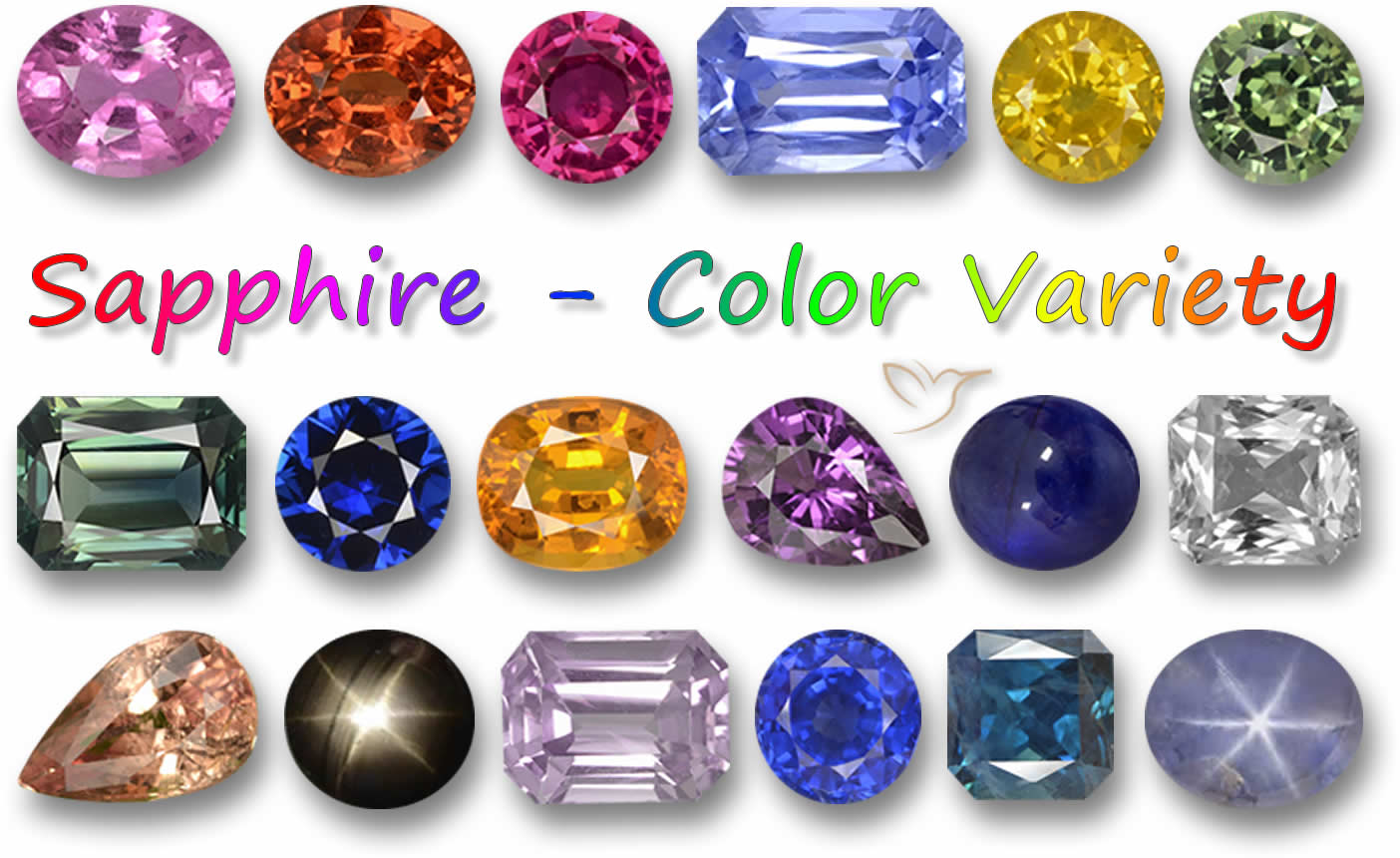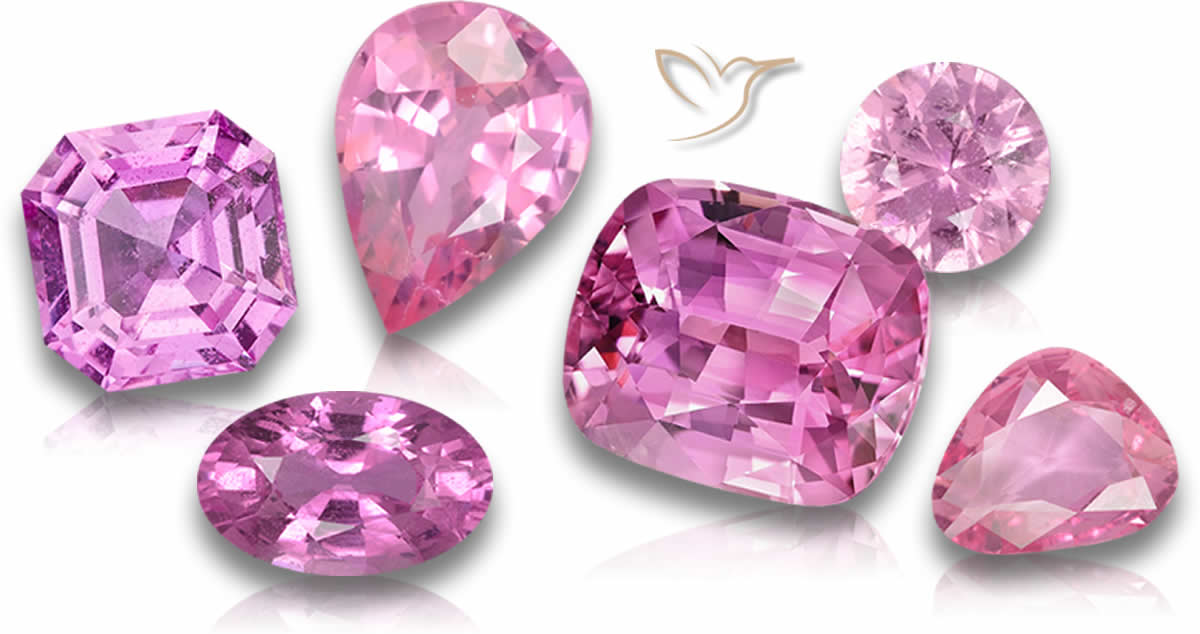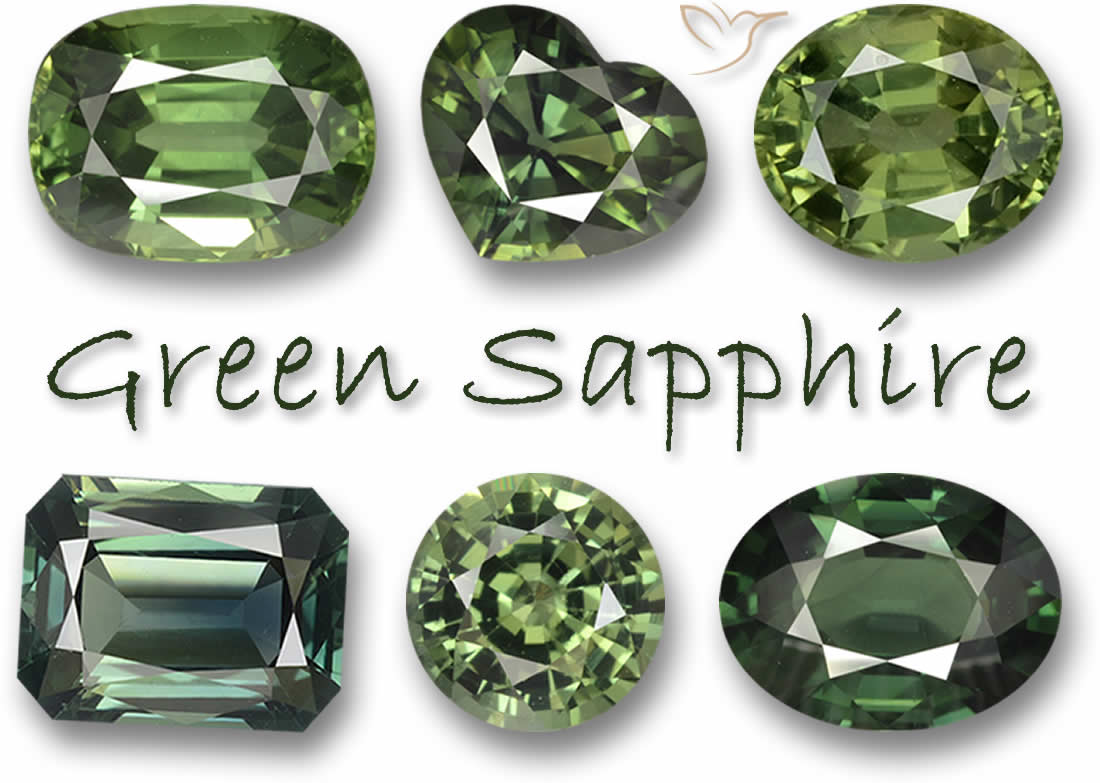What are the different colors of sapphires, and do they affect the value?

Introduction
Sapphires rank high among gemstones for their striking beauty and lasting charm. You might think of them mainly in that classic blue, but the colors of sapphire stones actually cover an impressive array - from vibrant pinks and greens to deep purples and even clear, colorless options. These hues make sapphires versatile for all sorts of jewelry. Trace elements like iron, titanium, and chromium are what create each unique shade in a sapphire.
Blue sapphires stand out as the most renowned and pricey variety. The top ones show a deep blue with a hint of violet in medium to dark tones, commanding premium prices. But hey, sapphires aren't limited to blue - fancy color sapphires shine in hues like padparadscha (that pink-orange blend), along with pink, purple, yellow, orange, and green. Each brings its own look and market price.
The sapphire color spectrum is broad and fascinating. How the color distributes, plus any treatments, plays a big role in the gem's hue, saturation, and tone. Getting familiar with these colors and their values deepens our appreciation for these gems. If you're shopping, checking out loose sapphires for sale is a smart way to compare shades and costs. For a comprehensive overview, explore our Sapphire Gemstone Information.
Key Takeaways
- Sapphires appear in a broad palette, including blue, pink, orange, yellow, green, purple, and violet.
- Blue sapphires hold the highest value, especially those with a velvety blue to violetish blue in medium to medium-dark tones.
- Fancy color sapphires, like padparadscha, pink, and yellow, each feature distinct ranges and market worth.
- Color primarily drives a sapphire's value, though clarity, cut, and carat weight contribute as well.
- Treatments can alter value significantly, with untreated natural stones fetching the most.
The Appeal of Sapphires
Sapphires capture the hearts of jewelry enthusiasts everywhere. They're prized for their stunning looks and incredible durability. Plus, they represent the birthstone for September, adding a personal touch for those born in that month.
Each sapphire's color, luster, and depth create a one-of-a-kind gem. Take blue sapphires from Kashmir - they're so scarce they almost feel legendary. Gem experts prioritize intense, saturated colors when evaluating these stones.
Larger sapphires are tough to find, which drives up their cost. Gems over 15 carats in sought-after colors like blue or padparadscha often sell for millions at auctions.
Beyond that, sapphires carry symbolic weight - they mark the 5th and 45th wedding anniversaries and serve as September's gemstone.
Exploring Sapphire Colors
If you're wondering, "Sapphire, what color?" know that these gems go way beyond blue. The most valuable are often blue with rich blue to violet shades in medium-dark tones. Let's explore the captivating world of sapphire colors that draw in gem fans globally.
Blue Sapphires
Blue sapphires earn top marks for their deep blue to violet tones. They excel in medium-dark shades, boosting their per-carat value. Uniform, intense blue is what makes them so desirable.
Padparadscha Sapphires
Padparadscha sapphires feature a standout pink-orange fusion. Named after the lotus flower in Sanskrit, this hue captures the essence of these exceptional, rare gems. Dive deeper into Padparadscha Sapphire.
Pink and Purple Sapphires

Pink sapphires range from light red to light purple. Purple ones display tones from dark red to violet. Both command attention with their vivid colors. For more on this captivating hue, check out Pink Sapphire.
Yellow to Orange Sapphires
Yellow-orange sapphires span various shades, but the vivid yellows stand out as most prized for their bright, eye-catching vibe. Learn more about Yellow Sapphire, also known as Pukhraj Yellow Sapphire, or explore the dedicated Pukhraj Yellow Sapphire and Orange Sapphire.
Green Sapphires

Green sapphires are uncommon, blending yellow and blue for a consistent green. They bring an elegant flair to any jewelry collection, including shades like Teal Sapphire. Discover additional insights on Green Sapphire.
Color-Change Sapphires
Color-change sapphires shift appearance under different lighting, moving from blue-violet to purple. The fascination of this transformation directly ties to their worth. Read further about Color Change Sapphire.
How Colors Influence Sapphire Value
A sapphire's color is the biggest factor in its worth. Gem lovers seek out those with vibrant, uniform hues. In blues, velvety blue to violetish shades in medium tones fetch the highest per-carat prices.
That said, sapphires boast plenty of other colors beyond blue. Think padparadscha's pink-orange mix or options in pink, purple, yellow, orange, and green. Each shade carries its own scarcity and price point - rarer colors often mean higher values.
| Sapphire Color | Color Range | Value |
|---|---|---|
| Blue | Velvety blue to violetish blue, medium to medium-dark tones | Highest prices per carat |
| Padparadscha | Mix of pink and orange | Highly valuable compared to other fancy sapphires |
| Pink | Light red to light purple, varying saturation levels | Moderate to high value |
| Purple | Medium to dark reddish purple to violetish purple, weak to vivid saturation | Moderate to high value |
| Yellow | Yellow to orangy yellow, with vivid saturation | Moderate value |
| Orange | Deep golden to reddish orange, with vivid saturation | Moderate to high value |
| Green | Saturated color, a mix of yellow and blue | Rare and highly desired by collectors |
While color leads, clarity, cut, and carat play supporting roles. Understanding sapphire colors reveals just how exceptional these gems truly are.
Clarity and Its Impact on Value
Color matters hugely, but clarity is a close second for sapphires. They tend to have some inclusions, though fewer than rubies. Eye-clean blue sapphires with minimal flaws are scarce and command high prices.
Sapphire Clarity Grading
Grading involves examining internal inclusions like needle-like rutile (which can produce the asterism effect in Star Sapphire), fingerprint-like healed fractures, or color zoning. In Kashmir sapphires, certain inclusions can actually boost value by creating a velvety appearance.
Inclusions in Sapphires
Clarity counts, yet color remains the top factor. Some heavily included sapphires can still hold significant value if they're rare or visually appealing. Ultimately, color, value draws from a mix of color, cut, clarity, and clarity.Sapphire Sources and Origin
Origin can swing a sapphire's value big time. Kashmir blue sapphires lead the pack for their unique hue, reaching up to $60,000 per carat. Burmese ones follow for their distinctive color.
Sri Lankan Sapphires
Sri Lankan blue sapphires are more accessible and affordable, yet they deliver excellent quality and beauty.
Madagascar Sapphires
Madagascar is rising as a major source, yielding gems that compete with traditional origins in quality. These feature intense blues on par with the finest from Kashmir and Burma.
Sapphires from Thailand and West Africa tend toward darker tones and come at lower prices than those from Kashmir, Burma, Sri Lanka, or Madagascar.
Treatments and Enhancement of Sapphires
Sapphires are beloved for their beauty and enduring appeal. Their path to perfection often includes various treatments that shape their appearance and worth. Let's break down common sapphire enhancements.
Heat Treatment
Heat treatment applies to over 98% of market sapphires. Temperatures from 400 to over 1,700 degrees Celsius enhance clarity and vibrancy, making them more appealing and valuable.
Diffusion Treatment
Diffusion introduces elements like beryllium to alter color, sometimes creating vivid hues - though not always stably. Gemologists scrutinize these, as they can influence market value.
Coatings and Fillings
Methods like coatings, filling, and laser drilling improve clarity and looks, but they can impact the gem's overall value.
Treated stones are usually more budget-friendly, while natural, unheated sapphires command premiums for rarity. Expert gemologists ensure authenticity by identifying treatments.
Rarity, Demand, and Sapphire Value
The scarcity and demand for natural, untreated sapphires drive their prices. Large, top-grade stones are exceptionally rare, with value spiking as size increases. Trends, economy, and preferences for natural vs. synthetic also factor in.
Advances in synthetics offer cheaper options, but the unique charm of natural, ethically sourced sapphires keeps them prized.
| Sapphire Attributes | Value Range |
|---|---|
| Kashmir Sapphire (Cornflower Blue) | Up to $135,000 per carat |
| Padparadscha Sapphire (Rare Orange-Pink) | Around $30,000 per carat |
| Top Quality Blue Sapphire (1-2 carats) | $800 - $1,200 per carat |
| Top Quality Blue Sapphire (2-3 carats) | $1,600 - $2,000 per carat |
| Natural Untreated Sapphires | Higher value than synthetic |
Rare, high-demand sapphires hold and build value over time, especially those with rich color and clarity. Their timeless qualities ensure enduring desirability.
Conclusion
Sapphires captivate with their wide color array, from timeless blue to exotic fancy shades. Value centers on color, with clarity, cut, and carat adding layers.
Natural status, origin, and rarity all factor in. Kashmir blues can reach $60,000 per carat for small stones, while Madagascar ones might be darker and more affordable than Sri Lankan.
Knowing these elements highlights why sapphires shine so brightly - their vibrant colors and toughness make them favorites for collectors and admirers alike.
Frequently Asked Questions
What are the different colors of sapphires, and do they affect the value?
Sapphires span a wide spectrum, including blue, pink, orange, yellow, green, purple, and violet. Vivid, uniform colors boost value, with velvety blue to violetish blue topping the list. Fancy colors like pink and padparadscha hold worth based on rarity and demand.
How are sapphires graded based on color?
Sapphires get graded on a scale from light to dark tones, evaluating hue, saturation, and tone for a consistent assessment of color quality.
How do inclusions and clarity affect the value of a sapphire?
Blue sapphires often have inclusions that are subtle. Higher clarity increases worth, though some inclusions in Kashmir stones enhance value by adding a velvety texture. Color drives value most, but inclusions play a role.
How do the geographic origins of sapphires affect their value?
Origin impacts price heavily - Kashmir blues are premium, followed by Burmese. Sri Lankan and Madagascar are more common and affordable, while Thai and West African tend darker and cheaper.
How do treatments and enhancements affect the value of sapphires?
Most sapphires undergo heat or other treatments to improve appearance, making them accessible. Untreated naturals are rarer and more valuable, with gemologists able to detect enhancements.
What factors influence the rarity and demand for natural, untreated sapphires?
Natural, untreated sapphires are scarce, with value rising with size and quality. Demand ties to trends, economy, and preference over synthetics, keeping naturals highly sought.

